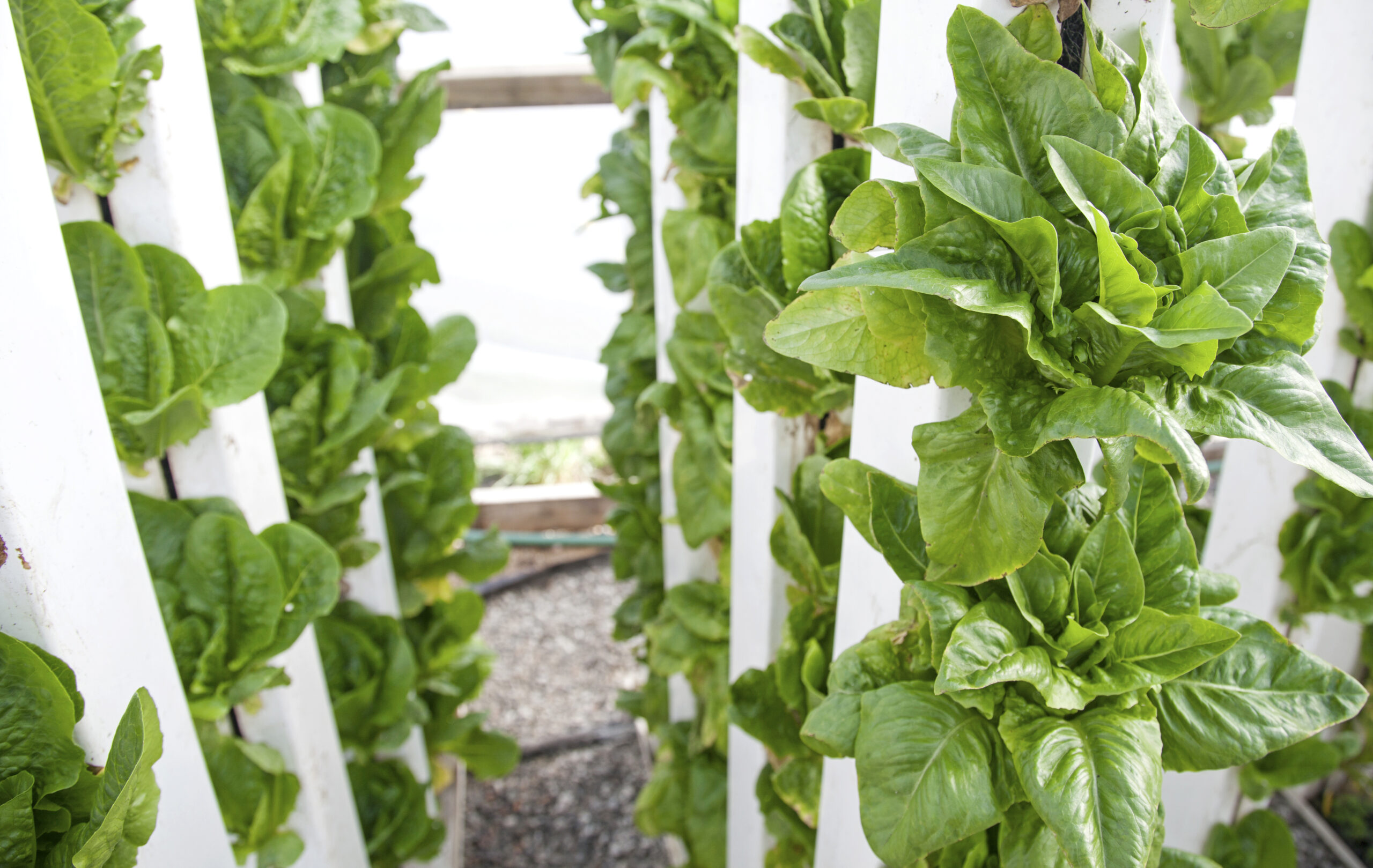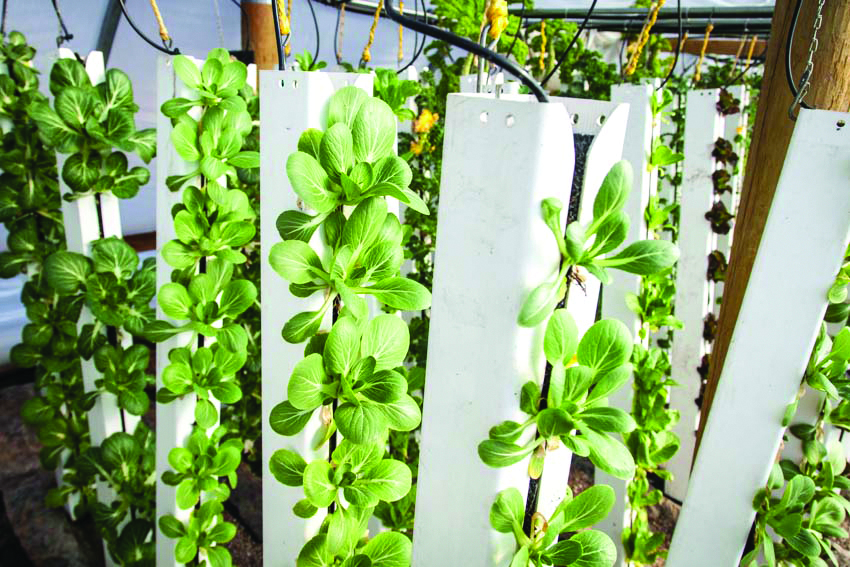What is a flow rate?
This post covers discuss flow rates for hydroponic farming systems using ZipGrow™ towers because they are the media-based vertical growing technique we’ve seen the most production out of here in the northern hemisphere.
Just to be clear, when I say “flow rate” all I’m referring to is the specific rate or velocity at which the volume of your aquaponic or hydroponic system solution (i.e. water + fish waste or water + nutrients) drains through your ZipGrow tower Matrix Media.
In other words: how fast you pump water through your towers.
Vertical farming media = mostly air
One of the first things to mention is the exceptionally high void space of the ZipGrow™ Matrix Media™.
ZipGrow™ Matrix Media™(our specially designed fiber media we’ve developed over the years) is 93% void space, or 93% air. This means that any water that enters the towers trickles down through the media quickly. (This is also called the percolation rate).
Because of all this void space, the Matrix Media™ contributes very little to the overall weight of a ZipGrow™ tower making it very lightweight and easy to move around or transport to market while it’s still living. However, because Matrix Media™ is mostly air, hydroponic and aquaponic growers alike need to ensure their flow rate reflects the rapid rate of percolation the nutrient solution experiences when traveling through the tower.
Having said that, we recommend a constant flow through your towers. Not only is this easier on your pumps in the long run, but it’s also an easier way to irrigate your towers at lower continuous rates and give your plants the best chance for optimal growth. (Side note: most pumps are designed for continuous pumping, not so much on and off over and over although some growers do run theirs on timers to save electricity, even if it’s not the biggest savings.)
Proper ZipGrow™ tower flow rates
Flow rates differ from aquaponics systems to hydroponics systems because of the nutrient concentration of the solution.
Flow rates for aquaponics systems
For aquaponics systems, a higher flow rate is necessary to keep a substantial amount of volume through your towers in order to promote good nitrification and well as good bio-filtration and mechanical filtration.
Flow rates for hydroponics systems
So how much water needs to move through your ZipGrow™ tower?

In hydroponics, your flow rate can be much lower than in aquaponics- as little as two gallons per hour- because the concentration of nutrients in your hydroponic solution is typically much higher. You don’t need to worry about nitrification or worry about solids filtration (i.e. getting rid of the fish solids in your system).
Too much flow can cause issues with wet plants. Too little flow could mean not delivering enough water or nutrients to your plants and will likely result in wilted plants or dwarfed production.
We suggest you start with 2 gallons/hour for hydroponics.
Pump Size and Flow Rate are Related
This is a simple equation that will give you the volume of water (in gallons per hour, or GPH) that your pump needs to be able to move:
(Number of towers)(2.o)= gallons from towers
The number you end up with is in GPH. Most pumps that you buy will have a GPH number that you need to know.
Note that 2 gallons is the minimum volume of water that you want in your towers, and a bit more wouldn’t hurt.
Need a pump? We are big fans of this type of submersible pump for hobby/small commercial systems.
Flow Rates and the Sustainability of Hydroponics
Now that you know your flow rates in hydroponics systems using ZipGrow™ towers, the next question is how much water can you anticipate losing each day.
In our system, we only lose 1-1.5% of our total system water each day because we run a very efficient recirculating system.
As you may or may not know, there are traditionally two types of hydroponic systems. One is the “Flow to Waste” system and the other is a “Recirculating” system.
Exceeding these flow rates
Now, like many of our recommendations, they are just that… recommendations!
Knowing that all systems are different, feel free to experiment with YOUR system and find the best flow rate for you.
If you do start to get excessive dripping from the front of your ZipGrow™ towers or you notice you’re losing a lot of solids in your system, you are probably pushing the upper limits of that flow rate range which could adversely affect your system’s health.
Delivering lower flow rates
You can definitely deliver a lower flow rate to your towers than we recommend as well as long as you’re delivering enough solids to be captured by the towers (in aquaponics), your plants aren’t wilting in midday, and that your plants are generally healthy.
Bonuses of matrix media
- One big bonus of the high void space of this media is that is makes the ZipGrow™ tower itself lightweight and easily transported from your greenhouse to a local supermarket, restaurant or local farmer’s market.
- Another bonus of having your plants rooted in a media with high void space is the fact that it helps maintain a highly aerobic environment for your roots. This will ward off any potential anaerobic zones, a common danger in raft systems or gravel media-based systems. With Matrix Media™, you’re less likely to have anaerobic conditions than any other technique on the market. Nothing gives you the type of aerobic environment that our media does.
- Finally, because our ZipGrow™ towers utilize a media-based approach, growers can regulate root zone temperatures that can be detrimental to your plants.






